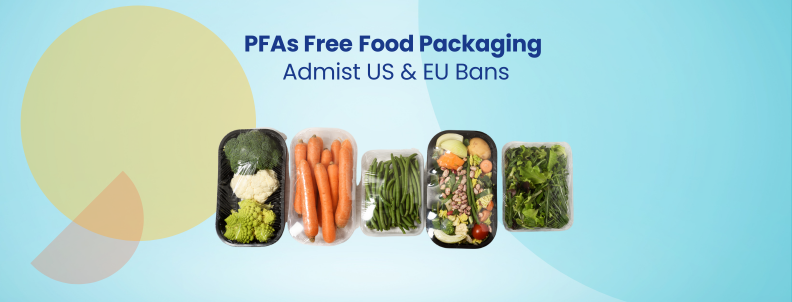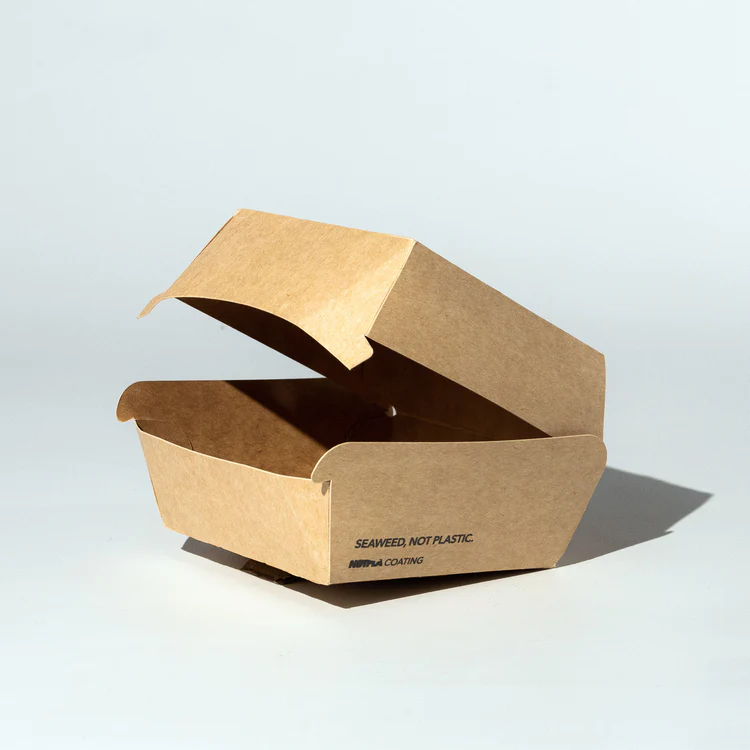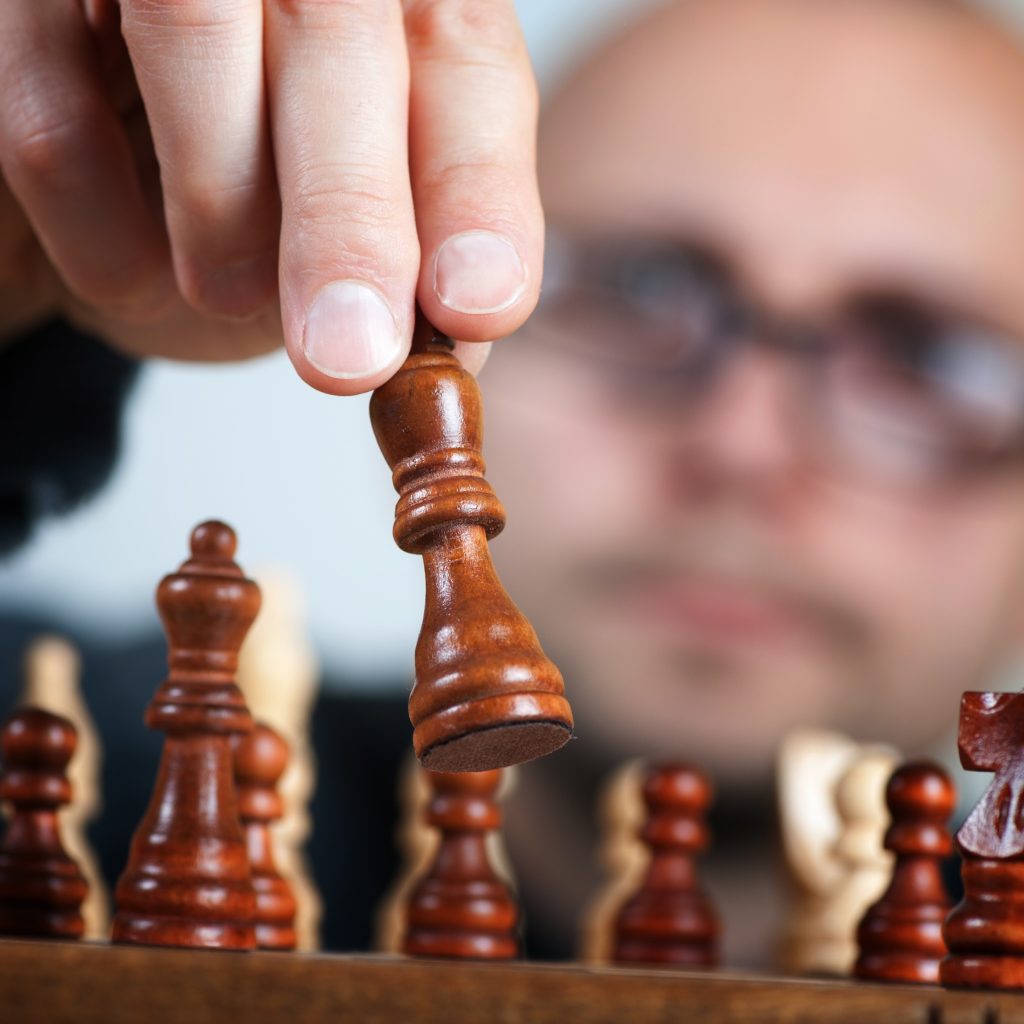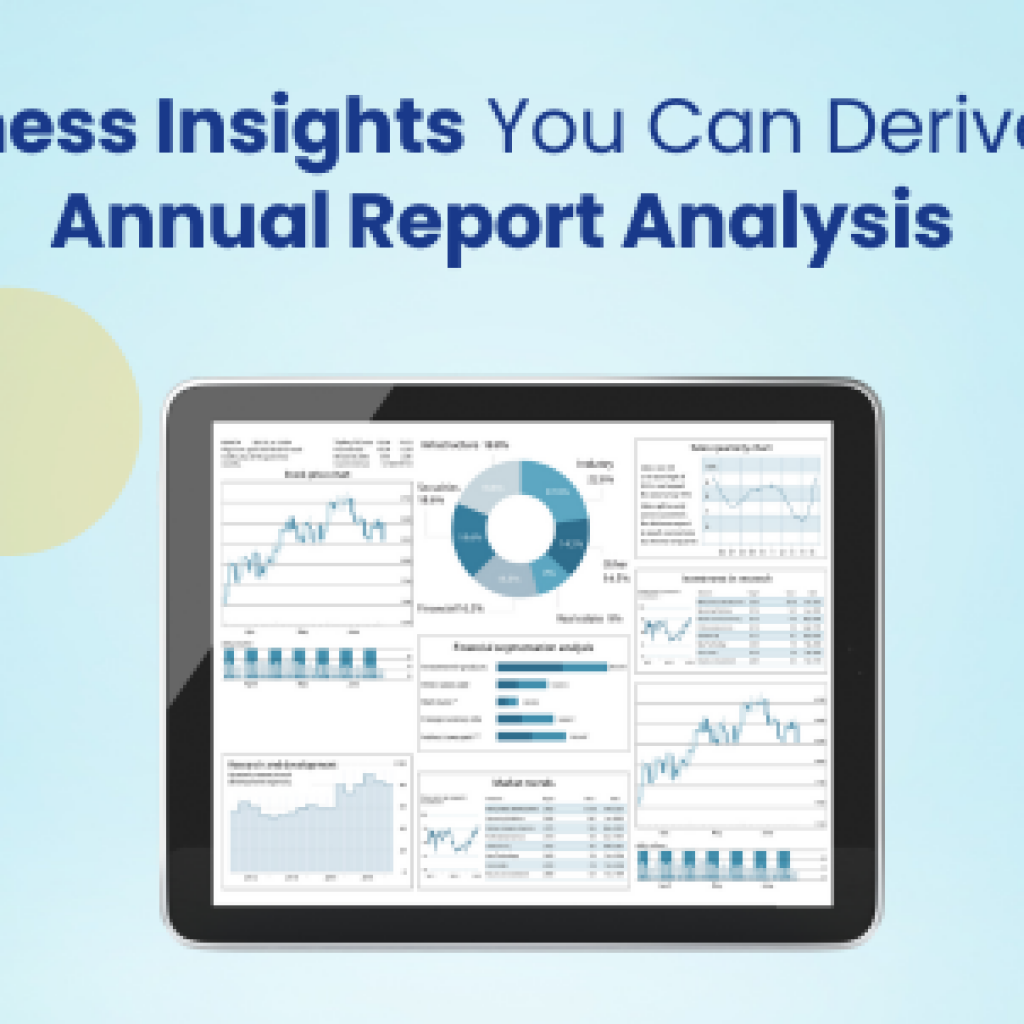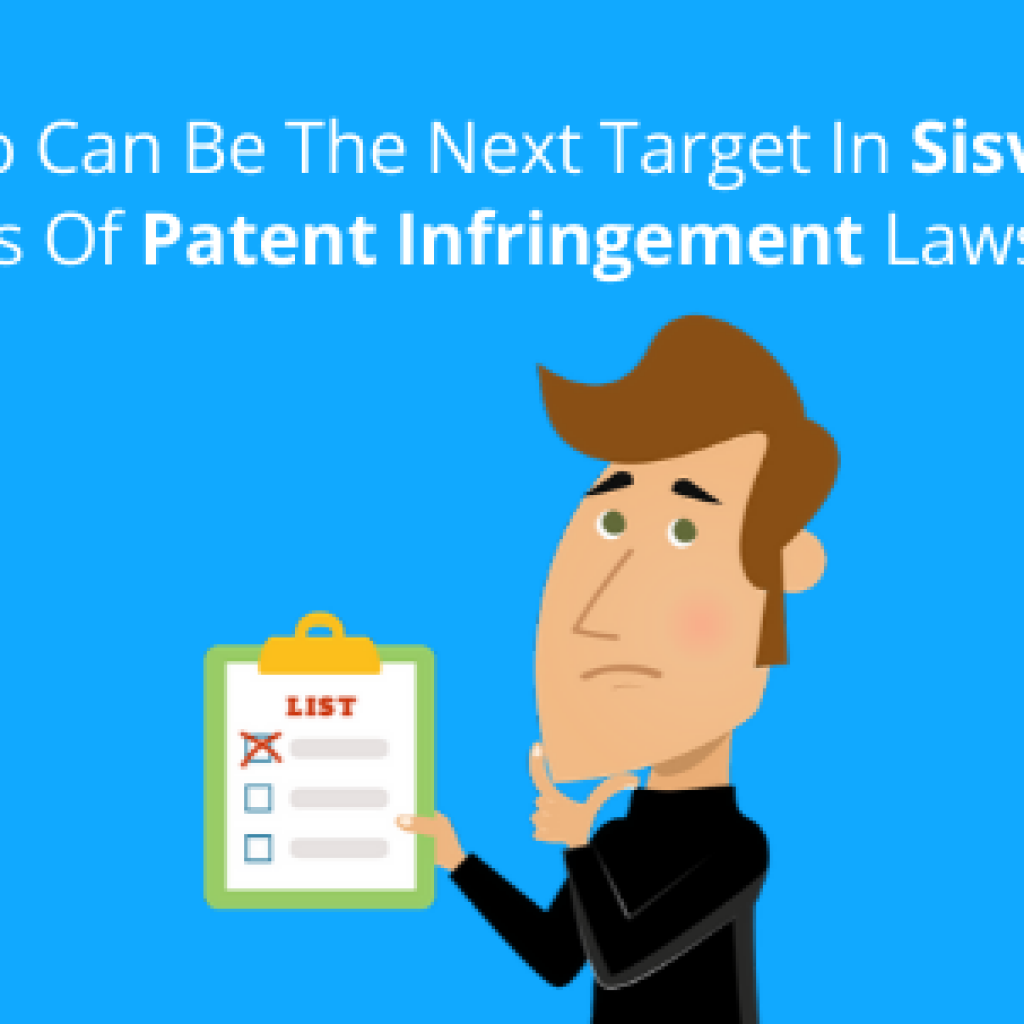The ban on PFAs (Perfluoroalkoxy Alkane) in the US and EU has left the food packaging industry grappling with uncertainty. The demand for immediate action on using PFAs free food packaging is rising. Companies are exploring compliant, safe, and sustainable alternatives to secure their future in the evolving regulatory environment.
In this article, we delve into the urgent need for PFA alternatives, compile the best alternatives based on patent data and scientific literature, and examine the companies and startups spearheading innovation.
Let’s dive right into it.
Interested in Packaging Industry Trends in 2024? Get our exclusive trends report by filling out the form below:
1. ContourSM and Molded Fiber Technology
Solenis has developed the contour technology to be a viable substitute for PFAS in manufacturing molded pulp food containers while maintaining compliance with rigorous performance standards. It is the first chemical that ensures functional coating without PFAS. Whereas Zume has created the molded fiber technology and machines for large-scale production.
These two U.S. companies have collaborated and developed PFA-free food packaging materials. They have already open-sourced their recipe as a global motivation to eliminate PFAs in food packaging as early as possible (source).
The process used by Zume and Solenis to develop the PFA-free packaging involves thermoforming, freeness, chemistry management, change management, and part formation on molded fibers.
The thermoforming process intensifies the material’s resistance to oil & grease migration through it. (basically doing PFAS job but without the adverse effects). Finally, to achieve the desired properties, the uniformity of the fiber matrix and minimization of void volumes is taken care of in part formation.
This tech is commercially available and can be customized, though its viability is limited to specific industries.
Next, we have a solution whose primary ingredient is a boundless resource on Earth.
2. Cellulose-based barrier films
Cellulotech is a material science start-up that creates food packaging products with cellulose. This company aims to expand the application of cellulose-based materials and help several industries, such as packaging, reach sustainability by replacing plastics and other harmful chemicals. While offering a similar or better cost and performance profile.
The company’s chief scientist Dr. Daniel Samain also holds an impressive portfolio of patents, which include coatings & machines for food packaging. One of his patents discusses making a water, grease, and vapor barrier film for food packaging. The process includes treating the surface to be coated with PVA and activated fatty acid. The surface is then subjected to nitrogen flushing under certain conditions so that the fatty acid is grafted on the surface with PVA.
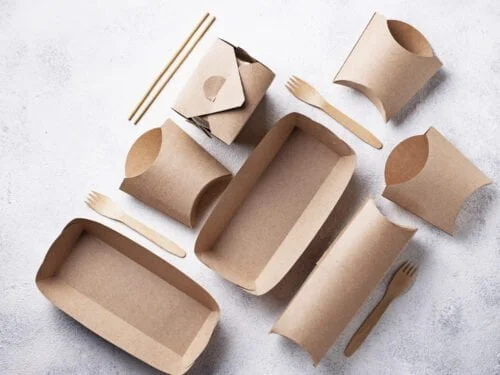
This innovation can be a potential solution for the worldwide PFAS problem, though it has not been commercialized yet. However, they are open to collaboration and do provide samples on demand.
Let’s move on to our third innovative PFA alternative, a coating made from plants!
3. PROTĒAN® and PureFiber™
HS Manufacturing Group has developed a patented technology named PROTEAN for food packaging. It’s a bio-based coating based on polyol or Saccharide based fatty acid (PFAE, SFAE). It provides good water and grease-resistant coatings on packaging surfaces while replacing plastic-based coatings.
The company is also open to licensing its technology to companies seeking sustainable products and developing new products in collaboration. The company has collaborated with Stora Enso, which has its own PureFibre technology that, according to research, has a carbon footprint lower than 75% of its competitors.
This collaboration has resulted in a patent-pending technology that is not only recyclable and biodegradable but also compostable and completely safe for food contact. This innovative barrier coating allows a diverse range of cellulose-based paper products to be transformed into high-quality, oil, grease, and water-resistant PFA alternatives.
The versatility of this technology opens up numerous possibilities for single-use food service items, revolutionizing the industry with sustainable and environmentally-friendly solutions. HS manufacturing group has also commercially licensed it on its website.
Next in line is a seaweed-based alternative researched by Flinders Institute for Nanoscale Science and Technology.
4. Seaweed-based alternative to PFA in food packaging
Australian researchers at Flinders Institute for Nanoscale Science and Technology and a German bio-material developer, One-five, have developed a seaweed-based biodegradable coating as an alternative to PFA in food packaging. Notpla has funded the same technology.
Notpla has also successfully launched its seaweed-based packaging, available on its website for purchase. Furthermore, this company has many accolades in their kitty, like the Tom Ford Plastic Innovation Prize and Earthshot Prize 2022.
Pennsylvania University is also developing a PFA alternative solution for the packaging industry.
5. PPC (Polysaccharide Polyelectrolyte Complexation) based coating for packaging
Researchers at Pennsylvania University have developed a coating based on polysaccharide polyelectrolyte complexation (PPC) as an alternative to PFA in food packaging. This coating has comparable properties to PFAS as a water and grease barrier. The coating is also cost-effective and can be used with the existing equipment.
Meanwhile, as the companies are working on these technologies, the EU and the US government agencies are not ones to be left behind.
The EU has funded a research program named ZeroF to find alternatives to PFAS in the food and textile industry. The program has brought researchers and industrial experts together to tackle the PFAS problem by 2025. In addition, USDA has filed a patent for a packaging invention to curb the amount of PFAS in food packaging products. It is for a PFAS-free biodegradable coating to be applied on paper-based surfaces, providing good oil resistance to paper-based food packaging.
Conclusion
PFAS are released into the environment primarily because they are present in the outside coatings of food packaging to avoid the disintegration of packaging by water, oil, or other substances. These solutions cater to that while doing what PFAs don’t, i.e., creating a safer environment and complying with the regulations.
Discover which other startups are leading in creating innovative and compliant PFA alternatives in food packaging.
Let’s talk.
Authored by: Midhat Yassin and Gaurav Dhiman, Patent Search
Edited by: Moksha Jain, Marketing

